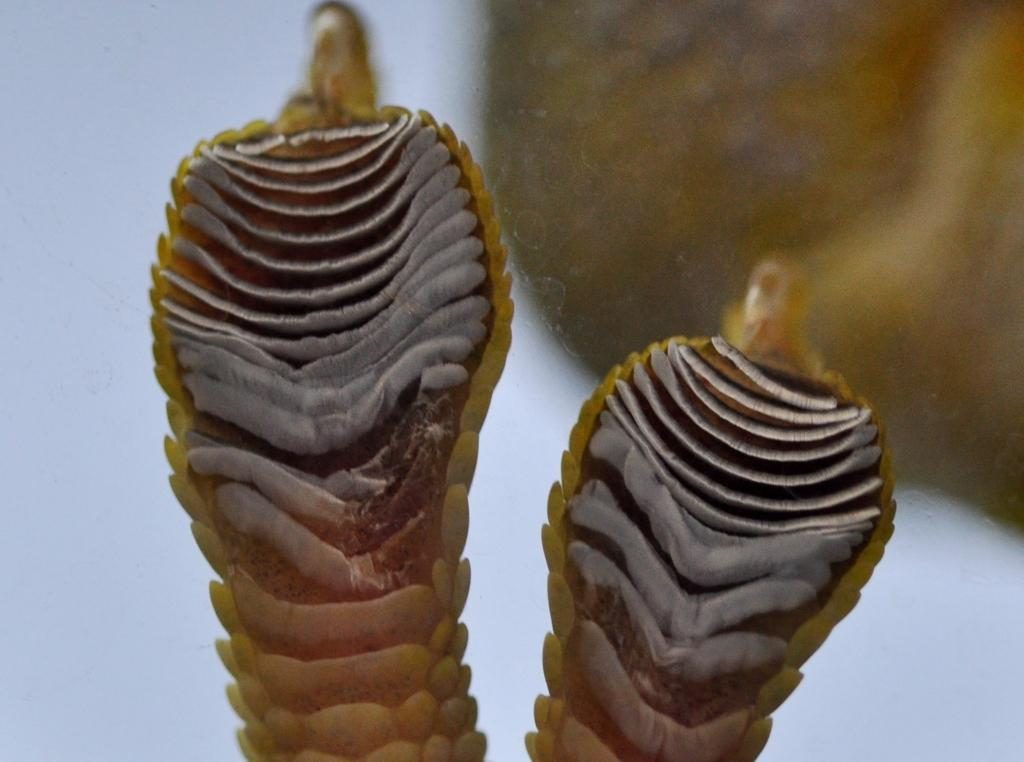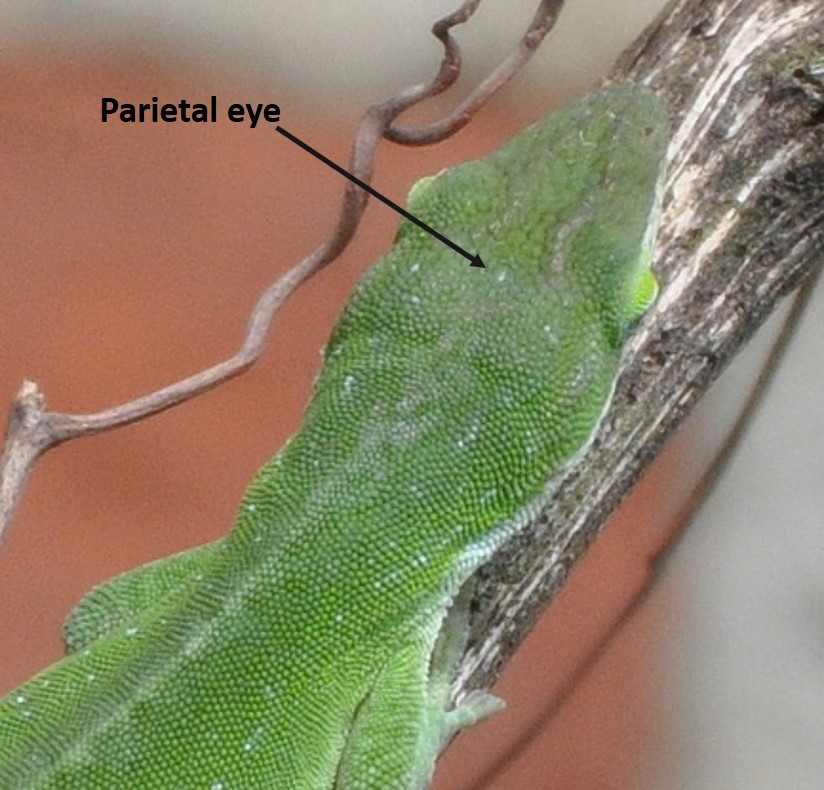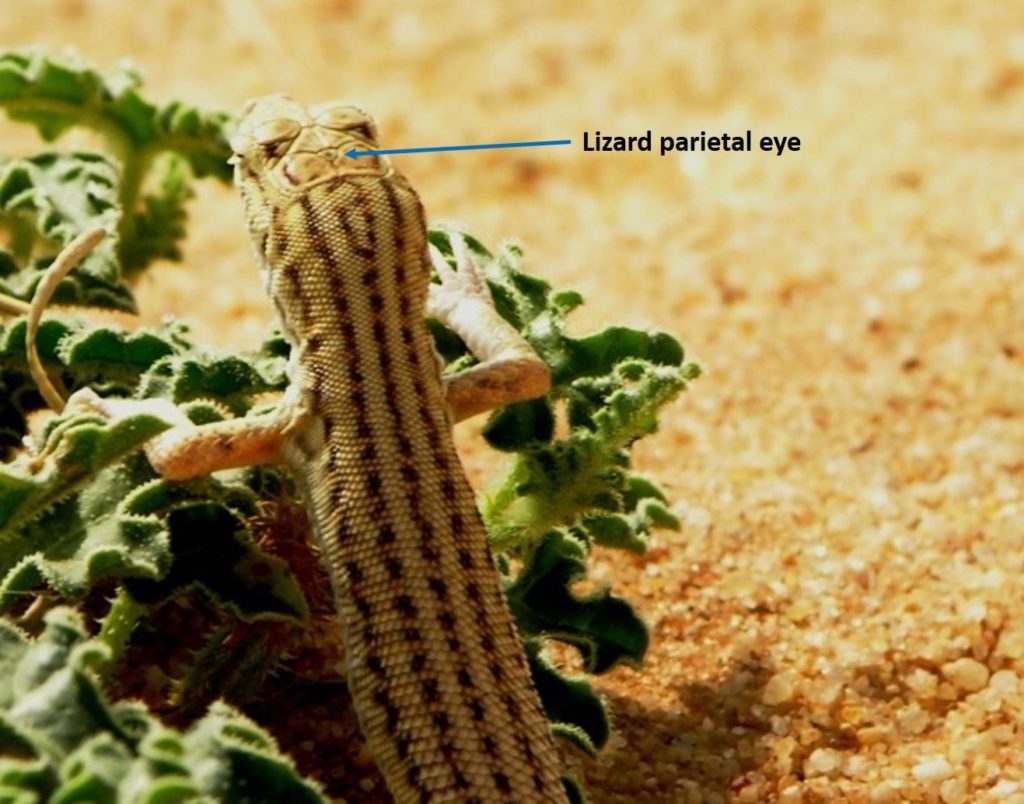The peculiar clinging talent of geckos is an object of fascination for any observer. Watching them scamper along the walls and ceilings of my hootch in Saudi Arabia provided many hours of entertainment. Like most I considered this ability due to the unique mechanical construction of the underside of their clingy gecko feet. While part of that is true the real secret of gecko adhesion did not begin to emerge until the late 1960s and even now is an area of ongoing research. Basically it works like this: the toe pads are covered with tiny setae, microscopic hair like bristles. Each setae then blossoms into much tinier structures called spatulae. The result of all this hair splitting is a unique molecular interaction with the type of surface that the lizard happens to be tip toeing about on. Think about it. Cinging to a surface is very important to the lizard – but being able to instantly come loose is just as critical. Then we have this odd Third Eye business. Many lizards, and a number of other animal species, possess a kind of third eye on top of their head. This organ, the parietal eye is not a cyclopean organ designed to detect overhead prey or predators, although it does do this to an extent. Its primary function is to detect changes in light via bio chemical rather than a photo receptor mechanism as in a true eye.
For an incredibly detailed analysis of gecko toes take close look at this article in the Oxford Journals:
Mechanisms of Adhesions in Geckos by Kellar Autumn and Anne M. Peattie
http://icb.oxfordjournals.org/content/42/6/1081.full
For further insight into the parietal eye take a look here:
The role of the “third eye” in reptilian behavior. American Museum novitates ; no. 1870
Stebbins, Robert C. (Robert Cyril), 1915-; Eakin, Richard Marshall, 1910-
http://hdl.handle.net/2246/4659
<
>





Leave a Reply
You must be logged in to post a comment.